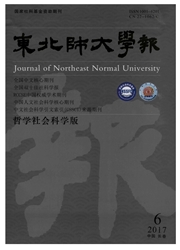

 中文摘要:
中文摘要:
自主研发、模仿创新和技术引进是后发国家技术进步的主要途径,知识产权保护在其中发挥着重要作用。笔者在垂直创新的南北贸易模型基础上,考察知识产权保护对后发国家不同产业技术选择的影响机理。结果表明:知识产权保护强度提高对后发国家低技术水平产业的自主创新具有边际递增作用。存在一个适宜的知识产权保护强度范围,最有利于后发国家利用自身低成本优势,采取自主创新与模仿创新相结合的技术发展模式,突破贸易"低端技术锁定"陷阱迈向更高的技术发展阶段。合意的知识产权保护强度内生于要素禀赋与技术水平,我国分行业面板数据检验结果较好地印证了本文的结论,暗示发展中国家可以通过制定差异化的知识产权保护强度来选择符合本国需求的技术进步模式。
 英文摘要:
英文摘要:
Independent RD,imitation innovation and technology introduction is the main way of technological progress in developing countries.Intellectual property protection directly affects the ratio between the three in the technical process,and thus to determine a country's technological progress patterns.Based on the model of North-South trade in the vertical innovation framework,this paper analyzes the impact of intellectual property protection on the technology selection across industries existing technological differences.The results of our studies indicate that:Increasing the strength of intellectual property protection of developing countries'has a marginal incremental promotion in independent RD of low-tech industries;There is an appropriate scope of intellectual property protection where the developing countries can combine innovation and imitation behavior with the low-cost anvantage to breakthrough "low-tech lock"trap to enter the higher technology development ladder;The optimal intellectual property protection is determined by the endowment and technical level between the trading parties.The quantitative test made by China's industrial panel data has also better supported the conclusions made in the paper,suggesting that developing countries can make differentiated IPR to absorb appropriate technology meeting domestic needs.
 同期刊论文项目
同期刊论文项目
 同项目期刊论文
同项目期刊论文
 期刊信息
期刊信息
